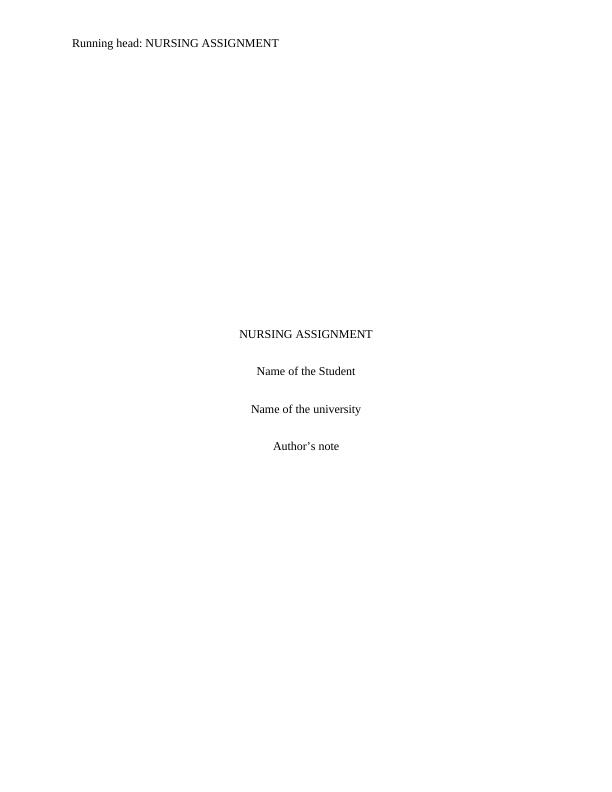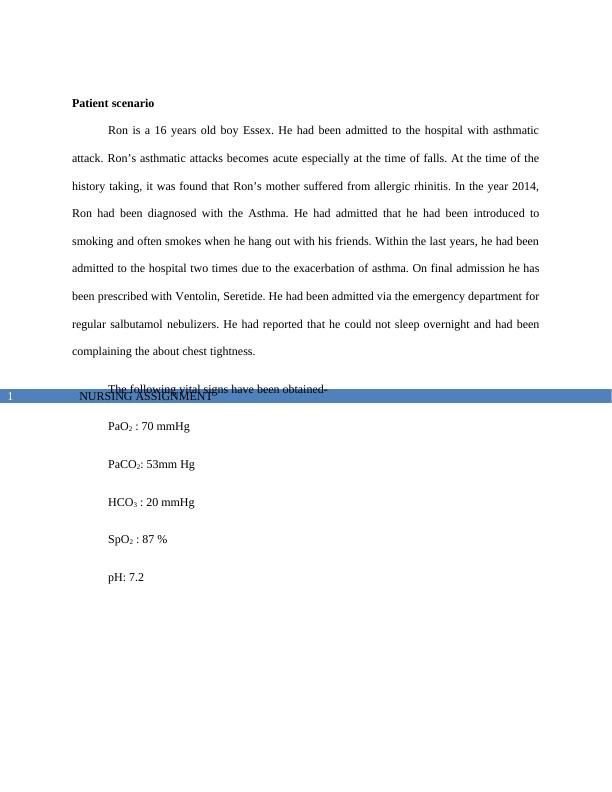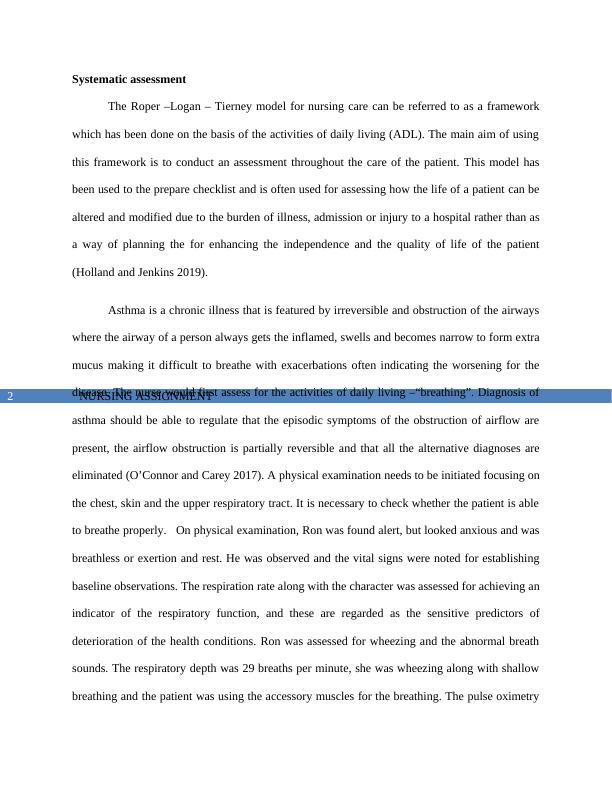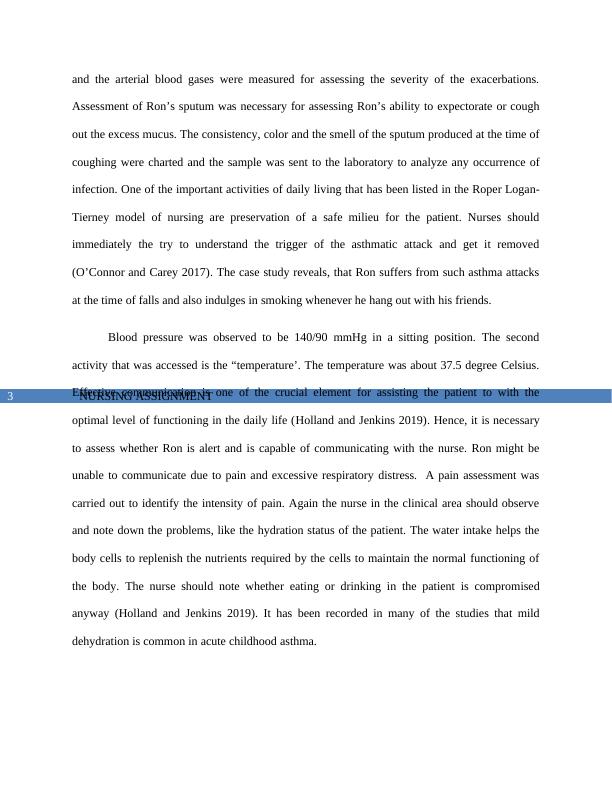Roper-Logan-Tierney Model | Nursing Assignment
Patient scenario of a 16-year-old boy with asthma and a history of allergic rhinitis and smoking.
13 Pages3502 Words61 Views
Added on 2022-09-06
Roper-Logan-Tierney Model | Nursing Assignment
Patient scenario of a 16-year-old boy with asthma and a history of allergic rhinitis and smoking.
Added on 2022-09-06
ShareRelated Documents
End of preview
Want to access all the pages? Upload your documents or become a member.
Acute Severe Asthma: Pathogenesis, Nursing Strategies, and Drug Mechanisms
|9
|2116
|88
These symptoms were found in Selena
|4
|789
|19
Case Study on Acute Asthma Attack Patient
|13
|3533
|60
Relevant Pathophysiology of Acute Exacerbation of Asthma
|9
|2337
|280
Managing Chronic Obstructive Pulmonary Disease (COPD): A Case Study
|11
|3361
|107
Nursing Case Study on Acute Asthma: Pathogenesis and Management
|9
|2178
|99




